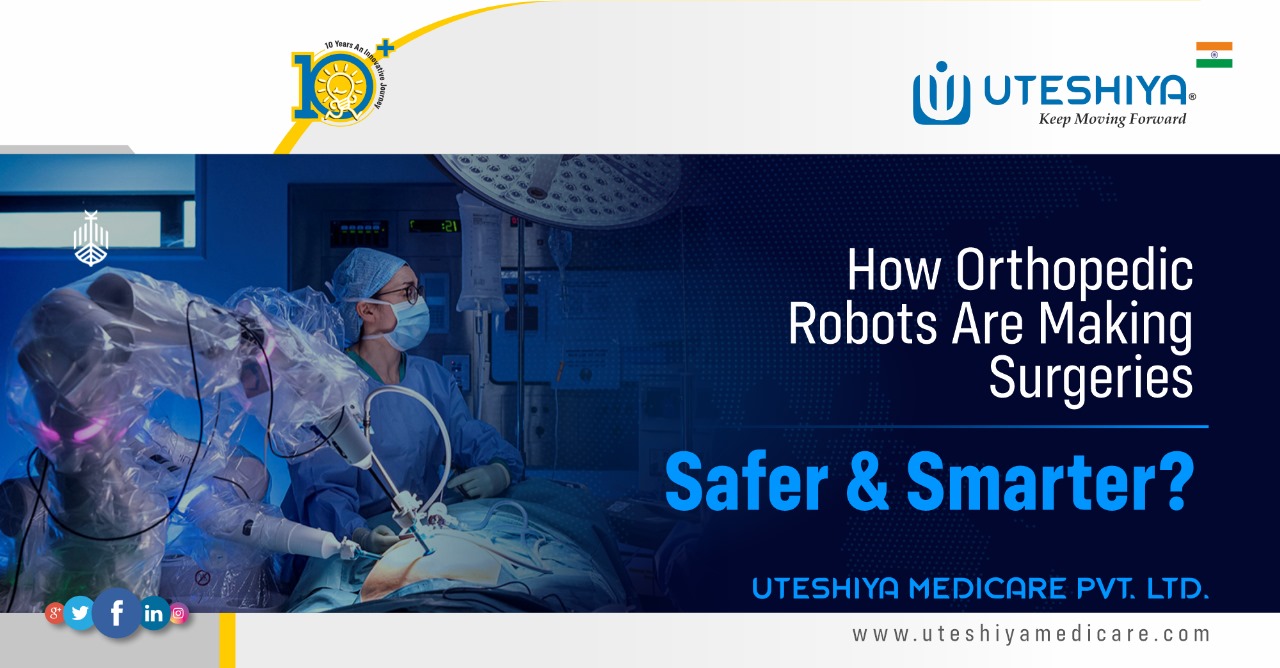Orthopedic surgery has always required exceptional accuracy. From fracture repair to joint replacement, even minor errors can impact a patient’s recovery and long-term mobility. Historically, surgeons depended on experience, steady hands, and traditional imaging to perform difficult procedures. However, in recent years, an unnoticed development has occurred inside surgery facilities, with the advancement of surgical robotics in orthopedics.
This transformation is about more than simply futuristic technologies supporting doctors; it’s about making patients’ outcomes safer, more precise, and predictable. Orthopedic surgical robots have become an essential partner for surgeons, combining advanced imaging, immediate information, and automated precision.
This post will discuss the advantages, difficulties, and prospects for patients and physicians of how robotic technology is changing orthopedic surgery.
From Manual to Robotic Assistance
For many years, orthopedic treatments like hip and knee replacements were carried out by hand. While surgeons produced remarkable results, their success primarily depended on experience and manual perception. Human error and variation were always possible, regardless of the surgeon’s skill level.
The development of robotics impacted the environment. These systems serve as extensions of the surgeon’s knowledge. Instead of replacing human judgment, they enhance it by providing instant navigation, data-driven insights, and precision devices that position implants or make cuts with millimeter accuracy.
This development reflects broader advances in healthcare, as technology enables clinicians to provide safer, faster, and more consistent care.
How do orthopedic surgical robots work?
Modern surgical robots do not operate on their own. They do not operate on patients individually. Instead, they serve as skilled assistants, controlled and supervised by doctors. Here’s how they usually work.
- Preoperative planning involves uploading imaging images such as CT or MRI into the robotic system. This generates a 3D map of the patient’s anatomy, allowing surgeons to plan every aspect before entering the operating room.
- During surgery, the robot provides immediate guidance. Sensors and cameras track surgical tools to guarantee the doctor remains inside the predetermined bounds.
- Compared to manual procedures, the robotic arm improves accuracy in bone preparation, implant alignment, and even minimally invasive incisions.
- The technology continuously feeds data back to the surgeon, who retains complete control while benefiting from an extra layer of precision.
Benefits to Patients and Surgeons
The apparent advantages of robotic-assisted orthopedic surgery are driving its popularity. These advantages are changing how surgeries are performed and how patients recover. Patients benefit from the following improvements.
- Robotics helps ensure that implants fit more correctly, reducing wear and issues.
- Smaller incisions typically result in less blood loss, less scarring, and faster recovery.
- Because of the reduced trauma during surgery, numerous patients can return to normal activities sooner.
- Revision operations are less likely if implants are placed correctly.
Robotic systems provide surgeons with-
- Improved visibility of bone and joint architecture.
- Decision-making based on data during procedures.
- More consistent results across multiple patient instances.
- Reduced fatigue during lengthy, difficult procedures.
The cooperation of human skill and robotic precision makes the technology so effective.
Practical Uses of Orthopedic Surgery
Robotic technology is no longer restricted to research applications. It is already having an impact on many orthopedic specialties.
- Knee and hip replacements, where proper implant alignment is essential for long-term success, are typical applications for robotic systems.
- In spinal surgery, robots help with screw placement and structure stabilization with unparalleled accuracy, lowering the possibility of nerve damage.
- Robotic technologies assist in the highly accurate reconstruction of bones in difficult fractures, guaranteeing appropriate healing and mobility.
- Robotic navigation benefits ligament or cartilage injuries, allowing athletes to return to play more quickly.
How Important Precision Is Now More Than Ever
In orthopedics, millimeters matter. A marginally misplaced hip implant or an incorrectly placed screw can result in chronic pain, restricted movement, or the need for additional surgery.
Robotic systems reduce these dangers. They enable surgeons to detect and make up for even minor differences in anatomy. For example, in knee replacements, a robot guarantees that the joint line and implant are exactly aligned, which directly affects a patient’s ability to walk easily after surgery. In short, precision is not a luxury; it is necessary for a higher quality of life.
Managing Safety Concerns.
Patients frequently inquire whether robotic surgery implies a higher risk. The answer is no; in fact, safety is one of the most significant advantages.
Modern methods incorporate safety measures and surgeon oversight at all stages. Robots do not act on their own; they simply assist. This guarantees that the surgeon always has control.
Furthermore, by increasing accuracy, robotic surgery lowers consequences such as infections, implant failures, and extended recovery times. In many cases, the whole surgical procedure is shorter, resulting in lower anesthetic time and associated risks.
The Future Of Robotic Orthopedics
It appears that robotics in orthopedics has an exciting prospect. Robots will use AI to direct surgeries and forecast results for better planning. Newer systems are growing smaller and more inexpensive, making them more widely used in hospitals. Surgeons may also utilize augmented reality to see patient anatomy, while 3D printing will allow implants to be custom-made for each patient. Overall, these developments will make procedures safer, faster, and more individualized.
How Challenges Still Affect Progress
There are challenges with robotic orthopedic surgery despite its potential. The significance of sustained investment and innovation in expanding the technology’s accessibility is made clear by these challenges. Some of the most important challenges are as follows.
High costs: Robotic systems and their maintenance are prohibitively expensive, limiting access to smaller hospitals and developing countries.
Training requirements: Surgeons need specific training to use robotic platforms properly, which can hinder adoption.
Accessibility: Patients in rural or poor healthcare institutions may still use traditional methods.
Wrapping It Up
The development of orthopedic surgical robots is altering the way bone and joint procedures are performed. With robotic precision and surgeon competence, procedures continue to get safer, faster, and more efficient.
Uteshiya Medicare is an internationally recognized producer of trusted surgical tools, offering dependable orthopedic instruments that benefit this developing sector.

